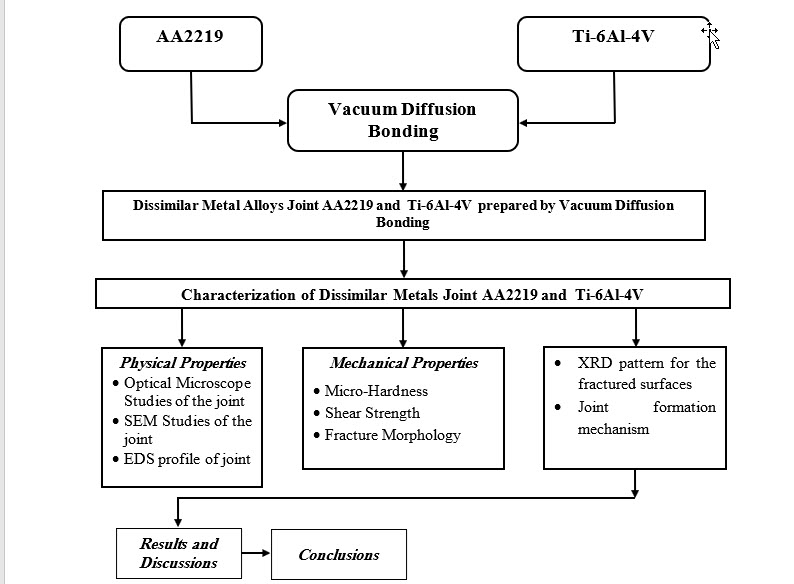Wed, Nov 26, 2025
[Archive]
Volume 22, Issue 2 (JUNE 2025)
IJMSE 2025, 22(2): 78-91 |
Back to browse issues page
Download citation:
BibTeX | RIS | EndNote | Medlars | ProCite | Reference Manager | RefWorks
Send citation to:



BibTeX | RIS | EndNote | Medlars | ProCite | Reference Manager | RefWorks
Send citation to:
Vatnalmath M, Auradi V, Vedashantha Murthy B, Nagaral M, G B V K, Shetty S et al . Vacuum Diffusion Bonding of Dissimilar Metal Alloys AA2219 and Ti-6Al-4V: Influence of Bonding Pressure on Microstructure and Mechanical Properties of the Bonding Joint. IJMSE 2025; 22 (2) :78-91
URL: http://ijmse.iust.ac.ir/article-1-3776-en.html
URL: http://ijmse.iust.ac.ir/article-1-3776-en.html
Manjunath Vatnalmath 
 , Virupaxi Auradi
, Virupaxi Auradi 
 , Bharath Vedashantha Murthy
, Bharath Vedashantha Murthy 
 , Madeva Nagaral
, Madeva Nagaral 
 , Veeresh Kumar G B
, Veeresh Kumar G B 
 , Suresh Shetty
, Suresh Shetty 
 , SURESH SHETTY
, SURESH SHETTY 


 , Virupaxi Auradi
, Virupaxi Auradi 
 , Bharath Vedashantha Murthy
, Bharath Vedashantha Murthy 
 , Madeva Nagaral
, Madeva Nagaral 
 , Veeresh Kumar G B
, Veeresh Kumar G B 
 , Suresh Shetty
, Suresh Shetty 
 , SURESH SHETTY
, SURESH SHETTY 

Abstract: (10679 Views)
Dissimilar joints of AA2219 and Ti-6Al-4V alloys are obtained using the vacuum diffusion bonding method. The bonding pressure is controlled in the range of 1-4 MPa by keeping the bonding temperature and holding time constant. The influence of the bonding pressure on the microstructure and mechanical properties of the bonding joints is investigated. The diffusion behaviour across the interface of the bonding joints is increased with the increase in bonding pressure. The interface morphology of the specimen bonded at lower bonding pressures exhibits scraggly voids and cracks. The irregular voids and cracks are squeezed and gradually closed due to the significant increase in the diffusion between Al and Ti. The maximum shear strength of 81 MPa is obtained for the joint made at the bonding pressure of 4 MPa, and a diffusion layer of 0.76 µm is formed at the Ti side interface. The fracture morphology inferred the brittle failure of the bonding joints due to the formation of intermetallic compounds like TiAl, TiAl2, and TiAl3 at the interface of Al and Ti.
Keywords: AA2219, vacuum-diffusion, interface and fracture morphology, microstructure, mechanical property.
Type of Study: Research Paper |
Subject:
Ceramic Materials and Engineering
Send email to the article author
| Rights and permissions | |
 |
This work is licensed under a Creative Commons Attribution-NonCommercial 4.0 International License. |






